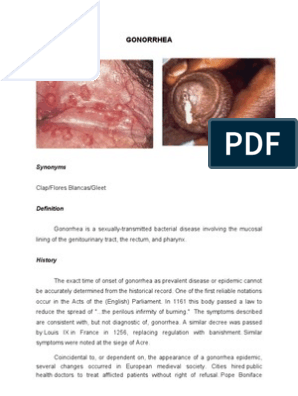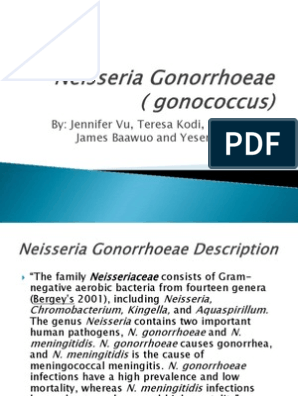0% found this document useful (0 votes)
20 views12 pagesGonococcal Urethritis
This document provides information about gonococcal urethritis including its definition, causes, clinical presentation, diagnosis, and treatment. It describes Neisseria gonorrhoeae bacteria and how it causes this sexually transmitted infection. The summary outlines the key points about symptoms, testing, and recommended dual antibiotic therapy regimens.
Uploaded by
Aastha SethCopyright
© © All Rights Reserved
We take content rights seriously. If you suspect this is your content, claim it here.
Available Formats
Download as PDF, TXT or read online on Scribd
0% found this document useful (0 votes)
20 views12 pagesGonococcal Urethritis
This document provides information about gonococcal urethritis including its definition, causes, clinical presentation, diagnosis, and treatment. It describes Neisseria gonorrhoeae bacteria and how it causes this sexually transmitted infection. The summary outlines the key points about symptoms, testing, and recommended dual antibiotic therapy regimens.
Uploaded by
Aastha SethCopyright
© © All Rights Reserved
We take content rights seriously. If you suspect this is your content, claim it here.
Available Formats
Download as PDF, TXT or read online on Scribd
/ 12



























































































